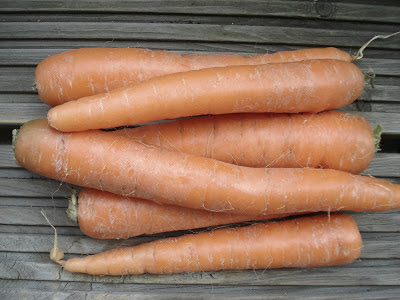Junebugs and Other Critters
It's June. The weather app on my iPod says that summer's arrived, and is sticking around, in Montreal. But it would seem that summer's come and gone from London. Oh well, one never can know what the skies hold for us, so we can only hope that the sun will come around some time soon. In the meantime, here are a few things to look forward to in June.
Asparagus
They're back. Weather permitting, asparagus season actually starts in May, but June is more reliably asparagus-friendly. Asparagus often peter out by mid-June, however, if there are no major heat-waves, the spears may hang around until the end of the month.
Berries
If you haven't sniffed them out already, then you must have been holed up inside, because the first strawberries have been hanging out at the markets for a few days now. The strawberry season has been lengthening yearly, and even though they will be around until late September/early October in Quebec, there is something sublime about the first berries of summer. Personally, I think that the first strawberries should be enjoyed on their own, while basking in the sun, if it deigns shine upon you when you bite into the berries. As the season advances, a light sprinkling of sugar, a dollop of cream, a shower of elderflowers may be welcome additions, but the first bite should be nature (plain).
Others berries to look for in June are gooseberries. If you've never seen gooseberries, they look like white currants on steroids. The berries are still grossly under-ripe in June, but do not be put off by the green and super tart fruits: unsuitable for eating out of hand, they are perfect for compotes, jams and jellies. Gooseberries have a very high pectin content, so you will need to add quite a bit of liquid to the cooked fruits to obtain a medium to soft set jam or jelly.
Cherries
Two words: sour cherries. They come into being much earlier than the sweet varieties, but they are the best for jams and baking. And for preserving in booze...
Once the flowers have burst open, the shrubs are easy to recognise. The white umbels emit the most intoxicating perfume on warm days. Fresh flowers can be sprinkled over strawberries, cooked with gooseberries, or made into cordials. The flowers can also be dried for herbal teas, where they will impart a mild anise flavour.
Salad Stuff
Summer goes hand in hand with salads. Which is a good thing as lettuce, radishes and other salad ingredients are abundant at this time of the year. And cheap as chips!
Lobster and Morels
Neither lobsters nor morels will ever be considered cheap, but they are in season in June. And nothing says 'celebration' like lobster and morels.
Peas
I have a soft spot for peas. (If you've been reading this blog for a while, this statement will need no repeating.) Peas are the ultimate late-spring/early summer treat: they're sugary enough to satisfy a sweet tooth, yet have green goodness for the health nut.
Peas do not like hot, sweltering weather, so they are at their best before the heat settles in. While there are late summer varieties of peas that can withstand even the muggy summers of the East coast, peas should be eaten as soon as possible.
New Potatoes
The beloved Jersey Royals of Britain start trickling in late-May, but June is when new potatoes really come into their own. In North America, few potatoes are sold with their names on the packages, which is a little unfortunate as each variety has its own distinctive flavours. The only way to get named varieties is to grow your own, which is, fortunately, quite easy to do given a little space.
All new potatoes, even those of starchy lineage, have a waxy texture, and are best boiled for eating hot with butter or in salads. They should be kept in the refrigerator, and not in a cool cupboard like main crop potatoes.
Most of you will be getting ready for your summer holidays, and most likely already have your summer reading list. If you are looking for some thought provoking books, may I suggest Jonathan Safran Foer's Eating Animals? Although Foer does end up becoming a vegetarian, this book is not a treatise on vegetarianism: Eating Animals is about just that, eating animals. If you aren't up for one's man search for the true story behind the industry of raising animals for food, you might prefer Ruth Ozeki's fictional renditions of a woman's search for the truth in My Year of Meats or in All Over Creation, about the industrialisation of potato farming.
Bon app'!


Comments
Post a Comment